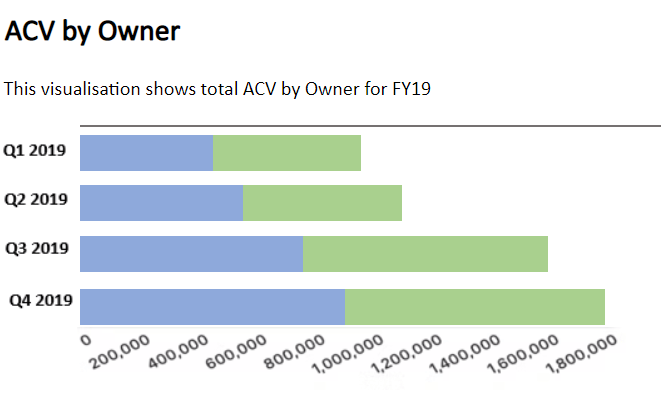
Unlocking Growth and Stability: The Significance of Annual Contract Value (ACV)
Introduction:
In the world of business, recurring revenue plays a vital role in driving growth and ensuring stability. Annual Contract Value (ACV) is a key metric that measures the annualized value of a customer’s contract or subscription. Understanding and leveraging ACV is crucial for businesses looking to maximize revenue, forecast growth, and build long-term customer relationships. In this article, we will explore the significance of Annual Contract Value and how it unlocks growth and stability for businesses.
Defining Annual Contract Value (ACV):
Annual Contract Value (ACV) represents the annual revenue that a business expects to generate from a customer’s contract or subscription. It is calculated by multiplying the average monthly revenue by the number of months in the contract term. ACV provides a standardized metric for evaluating the financial impact of customer agreements over a specific period.
Predictability and Stability:
ACV contributes to business predictability and stability by providing a steady stream of recurring revenue. Unlike one-time transactions, contracts with recurring revenue models, such as subscriptions or service agreements, generate predictable and consistent income. This stability allows businesses to forecast revenue more accurately, plan resources, and make strategic decisions with greater confidence.
Growth and Scalability:
ACV plays a crucial role in driving business growth and scalability. By focusing on expanding ACV, businesses can increase their revenue without solely relying on acquiring new customers. Upselling and cross-selling opportunities within existing contracts can be identified and leveraged to increase ACV. This approach not only maximizes the value extracted from each customer but also reduces customer acquisition costs, resulting in higher profit margins.
Customer Relationships and Retention:
ACV emphasizes the importance of building and nurturing long-term customer relationships. Customers who commit to longer-term contracts or subscriptions often have a higher lifetime value and are more likely to remain loyal. By providing exceptional customer experiences, delivering on promises, and continuously adding value, businesses can increase customer satisfaction and retention. A focus on customer success can lead to contract renewals, expansions, and ultimately, higher ACV.
Strategic Planning and Decision-Making:
ACV analysis enables businesses to make informed strategic decisions. By evaluating the distribution of ACV across different customer segments or industries, businesses can identify growth opportunities and allocate resources effectively. ACV insights also guide pricing strategies, helping businesses optimize their pricing models based on the perceived value and willingness to pay of different customer segments.
Investor Confidence and Valuation:
ACV is a key metric that investors consider when evaluating the financial health and growth potential of a business. A higher ACV signifies a more predictable revenue stream, which increases investor confidence. This can have a positive impact on the valuation of the business, making it more attractive to potential investors or during fundraising activities.
Conclusion:
Annual Contract Value (ACV) is a powerful metric that unlocks growth and stability for businesses. By focusing on recurring revenue and maximizing the value extracted from customer contracts or subscriptions, businesses can achieve financial predictability, drive growth, and build long-term customer relationships. ACV provides valuable insights for strategic planning, decision-making, and pricing strategies. Moreover, it instills investor confidence and enhances the overall valuation of the business. By understanding the significance of ACV and incorporating it into their business strategies, organizations can unlock the full potential of recurring revenue and establish a foundation for sustainable growth and stability.







